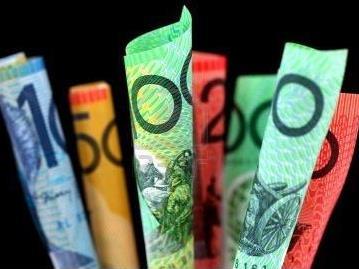The Department of Communication and the Arts has released its latest report this week: Cultural Funding by Government 2015–16 (1 August).
It shows that the Australian Government provided an estimated total cultural expenditure of $2.3 billion during 2015-16, $1.8 billion (or 79%) of which was used to fund arts activities and $474 million for heritage activities.
Quick Facts:
The estimated total expenditure by the three tiers of government during this period was $5,841.2 million for cultural activities:
$2,289.8 million (39.2%) from the Australian Government
$1,973.1 million (33.8%) from state and territory governments
$1,578.3 million (27.0%) from local government.
The amount spent on cultural activities by all government averaged $243.97 per person in Australia.
The report measured 24 categories across the heritage and arts sectors. The categories included museums, libraries, arts education, archives, music, festivals and film production.
To read the full report.
The Arts / Heritage balance
In 2015–16 the estimate of Australian Government expenditure on Arts was $1,816.3m, while $473.5m was spent on Heritage activities.
The Arts categories with the highest reported expenditure were Radio and television services ($1.347.2m), Film and video production and distribution ($88.2m) and Music ($71.3m). Together these three categories accounted for 83% of all funded expenditure on Arts undertaken by the Australian Government.
The next two highest areas of funding were Arts education ($48.0m) and Visual arts and crafts ($40.3m).
Expenditure by government for major institutions, which specialise in education of a cultural nature, such as the National Academy of Music, the National Institute of Dramatic Art, the Australian Ballet School and the Australian Film, Television and Radio School have been included under the Arts education category.
Over half (53%) of total Heritage expenditure was reported for the category of Other museums and cultural heritage at $248.6m. This was the second highest category of all Australian Government funding on cultural activities after Radio and television services.
Other museums and cultural heritage covered expenditure on the acquisition, collection management, conservation and exhibition of heritage objects.
This category also included Indigenous cultural heritage and keeping places, historic houses, historic museums, war memorials and National Trust organisations.
Expenditure on Archives was $96.0m and Art Museums was $67.9m, with expenditure on Libraries, which excludes funding for department libraries (e.g. parliamentary libraries) or libraries in educational institutions at $61.0m in 2015–16.
Recurrent versus Capital expenditure
In 2015–16 recurrent expenditure was $5,093.6m, representing 87% of total cultural expenditure. Recurrent expenditure is government funds towards programs, special projects including operational costs, wages and salaries, goods and services, current grants and transfer payments, specific purpose grants and subsidies.
Capital expenditure are funds on the creation of fixed assets (e.g. buildings, additions, renovations or restorations), land acquisitions and capital works on projects. The estimate of capital expenditure by all levels of government was $747.6m in 2015–16.
Most capital expenditure was funded by the state and territory governments at $334.0m (45% of total capital expenditure) while local government outlaid $233.9m and the Australian Government spent $179.8m in 2015–16 (31% and 24% of total capital expenditure respectively).
How much per person?
In 2015–16, total expenditure by the three tiers of government averaged $243.97 per person in Australia.
Cultural expenditure funded by the Australian Government in 2015–16 was $95.64 per person, with expenditure for Heritage activities being $19.78 per person, while for Arts it was $75.86 per person.
The estimate of expenditure by state and territory governments was $82.41 per person in 2015–16, comprising $51.93 per person for Heritage and $30.47 per person for Arts.
The estimate of expenditure on cultural activities by local government was $65.92 per person in 2015–16.
South Australia ($84.89), Western Australia ($75.66) and Victoria ($68.03) had the highest local government per person expenditure in 2015–16.
Where is the highest expenditure?
The five categories with the highest expenditure funded by the Australian Government in 2015–16 were:
- Radio and television services—$1,347.2m
- Other museums and cultural heritage—$248.6m
- Archives—$96.0m
- Film and video production and distribution—$88.2m
- Music—$71.3m.
The five categories with the highest expenditure funded by state and territory governments in 2015–16 were:
- Other museums and cultural heritage—$590.9m
- Libraries—$402.5m
- Art museums—$185.2m
- Performing arts venues—$180.5
- Film and video production and distribution—$90.5m.
Data for Local government were not available at the detailed category level and were reported at Total levels only.
State funding comparisons
Individual state and territory governments’ expenditure on cultural activities closely reflected population size.
The report showed: New South Wales ($587.9m), Victoria ($439.9m), Queensland ($307.1m) and Western Australia ($263.7m) spending more funds in 2015–16 than South Australia ($184.2m), Tasmania ($76.2m), the Australian Capital Territory ($63.3m), and the Northern Territory ($50.7m).
Heritage categories, with $1,243.4m, accounted for nearly two-thirds of state and territory government expenditure (63%) in 2015–16.
The highest Heritage category was Other museums and cultural heritage ($590.9m or 48% of heritage expenditure). These funds were provided to assist the operation of museums, cultural sites and war memorials, along with collection acquisition, management and exhibition.
The New South Wales Government was the largest contributor to Other museums and cultural heritage accounting for $304.1m (51%). Victoria (15%) was the next highest contributor with $87.9m.
To read the full report.
The Report prepared by a consultant from the Australian Bureau of Statistics on behalf of the Meeting of Cultural Ministers.






